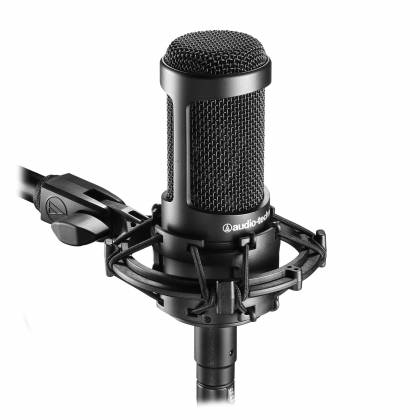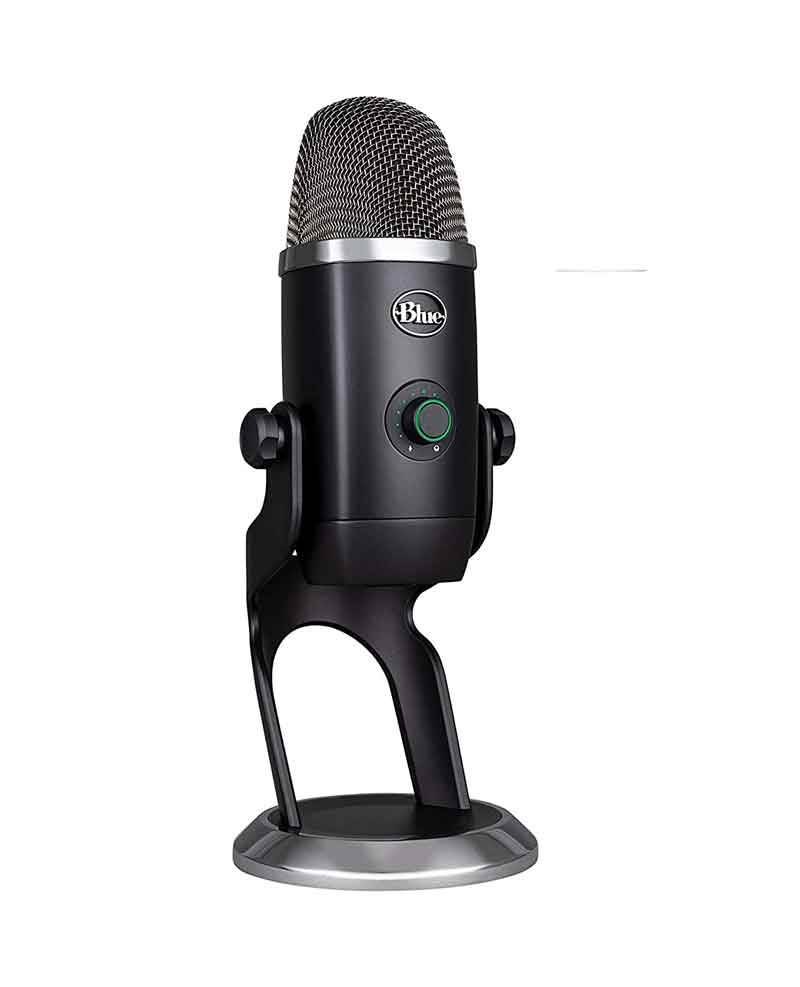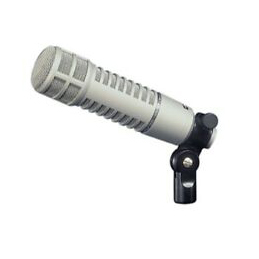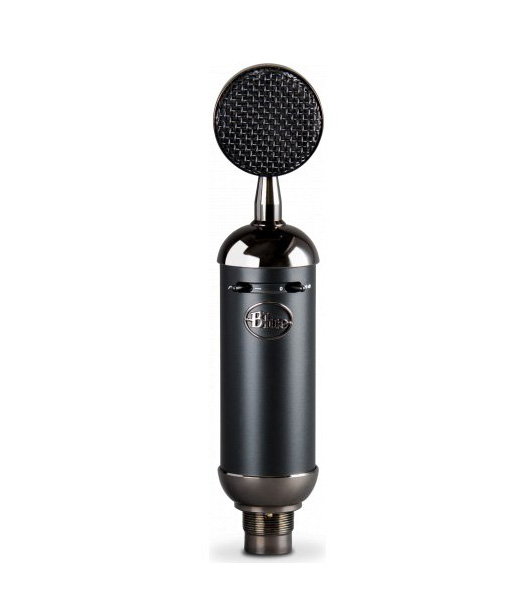Good webinar microphones are a key piece of equipment for the host. Now, there are many great brands and models to choose from and while some can be a bit pricey, many are very affordable.
At the end of the day, you want a mic that'll provide you with outstanding audio quality and great durability so that you always sound professional when you host your webinars.
In this article you'll find the 9 best rated webinar microphones on the market ranked and reviewed that'll have you smiling from ear to ear, including a summary of the top 3 editor's picks below for your convenience:
Multi-pattern USB condenser microphone. Built-in headphone jack. Integrated desk stand.
Disclosure: Although I receive affiliate compensation at no additional cost to you to support this site that compensation in no way influences my recommendations, which are strictly informed by my 10+ years of online business experience consulting for clients large and small. My aim is to always recommend tools that offer the best return for your investment (for more details, read my Affiliate Disclosure).
What Should I look for in Webinar Microphones?
The first thing to look for is audio quality. The trade off here is whether you should look into a dynamic or a condenser microphone.
If you want total voice clarity when you webcast, then you need to go for a condenser microphone. These are the types of mics you’ll find in broadcast radio and high-end podcasting.
But there’s a catch! Condenser mics are so sensitive that they’ll pick up everything, from the creaking of your chair to the engine rumble of a truck driving on the road nearby.
So, if you’re going to go strictly for voice quality, then you’ll likely need to find a quiet place to set up your gear away from windows and busy streets, and even then it wouldn’t be a bad idea to install some noise absorbing foam panels on the walls.
With a dynamic mic, on the other hand, you won't experience any of these issues (and they also tend to be less expensive), but you'll miss the absolute clarity in your voice.
The second consideration is whether to go with an XLR or a USB mic.
Here again, it’s down to the quality of the sound.
USB mics connect directly into your computer, so they're 100% plug and play. But, they don’t offer much in terms of pre-processing of the audio signal. All processing must be done after the fact via audio software.
XLR mics, on the other hand, can’t plug directly into your computer because they're analog devices that need to be connected to a mixer/amplifier board before becoming usable.
The upside, though, is that the mixer will provide you with additional pre-processing features that'll make your voice sound amazing. Typical examples are EQ, noise gates, and compression.
EQ can be useful to amplify the aspects of your voice you find appealing while eliminating those you don’t like.
Compression allows you to speak loudly without bursting your listeners’ ear drums and noise gates allow you to eliminate ambient hums or background noise from devices like air conditioners, loud desktop fans, etc.
The final consideration is budget.
While high-end microphones are long-term purchases (a quality mic will give you many years of enjoyment as long as you treat it nice), we can't deny the fact that money doesn’t grow on trees.
Fortunately, you’ll find amazing entry-level webinar microphones on this list that are surprisingly very affordable.
Having said that, if you find an inexpensive mic elsewhere, make sure to read several reviews before you purchase it because some low-priced microphones look great but sound awful.
What Are the Best Mics for Webinar Hosts?
Best Overall:
The Shure SM7B dynamic microphone is a great choice for webcasts and podcasts because it’s rugged and also happens to be an industry workhorse (if you pay close attention next time you watch a webinar or a video podcast, you'll begin to see it everywhere.)
In fact, the SM7B has a very clear sound quality for a lot of applications, including webinars, podcasts, live streaming and even singing (this mic is one of Paul McCartney’s favorites!).
The SM7B comes with an XLR output, so in order to connect it to your computer you’ll need to use an XLR mic cable with an XLR to USB adapter or a USB mixer.
Key Features
1. Dynamic microphone
2. Cardioid polar pattern (it picks up sound from in front of the mic while rejecting sounds coming from behind)
3. Rugged, professional-grade construction
4. Unmatched clarity on vocals or spoken-word applications
5. Frequency response of 50 to 20 kHz
6. Excellent shielding against electromagnetic hum caused by external devices
Price: $395.00
Best Condenser Mic:
The Audio Technica AT2035 large-diaphragm condenser microphone is another great choice for webinar hosts because it has a versatile pickup pattern, rugged construction and it has clear audio quality.
Best of all, it’s surprisingly affordable.
Key Features
1. Wide range and cardioid polar pattern
2. Frequency response of 20 Hz to 20 kHz
3. 120 ohm impedance
4. Low-frequency roll-off: 80Hz, 12dB/octave
5. Rugged construction
6. XLR connector
Price: $164.99
Best Budget Mic:
The Blue Yeti X is an innovative condenser USB mic that's very popular with webinar hosts and podcasters. It has excellent sound quality and rugged construction.
The Yeti X also has an adjustable selector with four choices of polar patterns: cardioid, figure-8, omni directional, and stereo pattern.
Key Features
1. Multi-pattern USB condenser microphone
2. Built-in headphone jack
3. Bit Depth/Sample Rate: 24-bit/48kHz
4. Multi-function smart knob to adjust mic gain, mute and headphone volume
5. Integrated desk stand
Price: $139.00
4. Audio-Technica BP40
Best for Broadcast Sound Quality
The Audio-Technica BP40 is a large-diaphragm dynamic microphone with a hypercardioid polar pattern that produces clear and crisp broadcast-quality sound, while minimizing rumble and pop via a switchable 100 Hz high-pass filter.
Key Features
1. Broadcast quality mic, rugged build
2. Rich, natural, condenser-like sound
3. Internal design eliminates electromagnetic interference
4. Multistage windscreen provides superior internal pop filtering
5. XLR connector
Price: $349.00
5. AKG P120
Best for General-Purpose Recording
The AKG P120 is a high-performance general purpose recording microphone that’s perfect for broadcast settings, giving you that high-quality audio that your viewers and listeners want to hear.
With its extremely affordable price, it punches well above its weight.
Key Features
1. All metal body with rugged design
2. Frequency response of 20 to 20 kHz
3. Cardioid polar pattern
4. 2/3-inch diaphragm true condenser microphone
5. Less than 200 ohm impedance
6. Switchable bass cut filter eliminates rumble
Price: $90.00
6. Electro Voice RE-20
Best for Voice Over Work
The Electro Voice RE-20 is a bit on the pricier side, but it’s an outstanding broadcast quality microphone with studio condenser-like performance.
This is an all-around premium mic for any type of voice work like webinars, podcasts, voiceover work, narration and broadcasting.
Key Features
1. Frequency response range of 45 Hz to 18 kHz
2. Internal shock mount, which reduces mechanical noise and vibration
3. Impedance: 150 ohms balanced
4. Favorite of broadcast show hosts and voice-over studios the world over
5. Hum-bucking coil provides exceptional electromagnetic shielding
Price: $449.00
7. HyperX QuadCast
Best for Quiet Studio Settings
This is a microphone that punches above its weight because it offers a lot of features that you might not expect to find on such an affordable device.
The HyperX QuadCast is great for quiet studio settings and comes with a convenient anti-vibration shock mount.
Key Features
1. USB microphone with four selectable polar patterns
2. Convenient gain-control adjustment and tap to mute sensor
3. Sample/bit rate: 48Hz/16-bit
4. Frequency response of 20 Hz to 20 kHz
5. Lightweight at just 254g
Price: $139.99
8. Blue Spark Blackout SL
Best for Fans of XLR Mics
The Blue Spark Blackout SL is perfect for webinar hosts since it captures high-quality sound while minimizing background noise with its cardioid polar pattern.
This microphone is Blue's most popular choice among fans of XLR mics.
Key Features
1. Clear and natural sound quality
2. XLR connector
3. 100Hz low cut filter increases clarity, reducing rumble
4. Frequency Response: 20Hz – 20kHz
5. Output Impedance: 50 ohms
Price: $159.99
9. Heil PR40
Best for Podcasters
The Heil PR 40 is a rugged top-performance dynamic microphone that sounds like a condenser mic. It’s ideal for voice applications, from voice-overs, to studio talk shows to webinars and podcasts.
In fact, the PR40 is the top choice for popular podcasters around the world.
Key Features
1. Wide frequency range: 28 Hz to 18 kHz
2. Internal Sorbothane Shock Mount
3. Cardioid Pickup Pattern
4. XLR connection
5. Impedance: 600 ohms balanced
Price: $329.00
How Do I Make My Mic Sound Better?
There are a number of tricks you can use to make your mic sound better (by the way, there are a ton of how to videos on YouTube on this very subject):
- Use compression (either software or hardware based) to prevent sudden volume changes if you start talking super loud and noise gates to eliminate hums and rumbles from your environment
- Get a mic stand or boom arm with an anti-shock mount to isolate the microphone from any vibrations coming through the point where the boom grips your table
- Adjust your microphone gain so that your signal never goes into the red in your audio software, otherwise you’ll run the risk of clipping your audio
- Most high-end mics come equipped with pop filters to eliminate those pesky plosive sounds we humans emit when speaking really close to a mike. Also, if you use a condenser mic, get a foam guard to stop the gust of air from your letter p’s from blowing into the mic's capsule
Are XLR Mics Better than USB?
The short answer is yes. XLR mics have existed a lot longer than USB ones, and there are some models out there that have been refined and improved literally over decades of use by professional musicians and broadcasters.
Because of that they tend to be much more rugged, solidly built and all around workhorses that can take pretty much any abuse.
XLR microphones can also plug into hardware devices specifically designed to pre-process your raw audio signal allowing you to create the perfect sound before it ever gets to your computer.
USB mics, on the other hand, don’t have the immediate advantage of all this pre-processing power (there's a workaround, though, as explained in the next question) as most people plug them directly into their computers.
Having said that, some USB mics are getting very sophisticated these days and are beginning to get pretty close to the sound of a good XLR mic (e.g. the USB microphones on this list.)
Do I Need a Mixer With a USB Mic?
Yes and no. You don’t need a mixer with a USB microphone since you can plug them directly into your computer and then process your sound using audio software.
However, there are several USB mixers out there that allow you to pre-process your digital audio signal like you would with a traditional XLR mixer. The choice is really yours, if you have the desire and the available funds.
How Do You Choose a Microphone for Webinars?
When choosing a microphone for webinars, you'll want to consider three key factors: pickup pattern, sound quality, and price.
The most important factor is the microphone's pickup pattern. You'll want to choose a mic that will capture your voice while minimizing noise from other sources.
The most common pickup patterns are cardioid (which picks up sound from in front of the mic), omnidirectional (which picks up sounds from all directions), and bidirectional (which picks up sound from two opposite directions, say, when you're interviewing someone).
Next, consider the microphone's sound quality. The cheaper microphones usually have less clarity and can be prone to interference from electromagnetic sources nearby.
If possible, try out several different webinar microphones to find one that has good sound quality for your voice.
Finally, consider the price. Webinar microphones range in price from around $80 to over $500. If you're just starting out, you may want to choose a less expensive microphone.
However, if you plan on doing a lot of webinars or other audio recordings, it may be worth investing in a top-quality microphone that will last you several years.
Wrapping Things Up
The best approach to choosing your webcasting microphone is to first settle on your budget — there’s no point in getting super excited about a mic you can’t really afford.
Once you have a price range in mind, then read a couple of full reviews for any of the choices on this list.
The popular webinar and podcast hosts that use these brands and models of microphones day in and day out are the best testament to their sound and durability, because they're heavy-duty users.
Each of the above webinar microphones are fantastic in their own right, they come with unique features that make them stand out from the crowd, and they'll all give you an ear to ear grin when you put them to the test. Good luck!

















